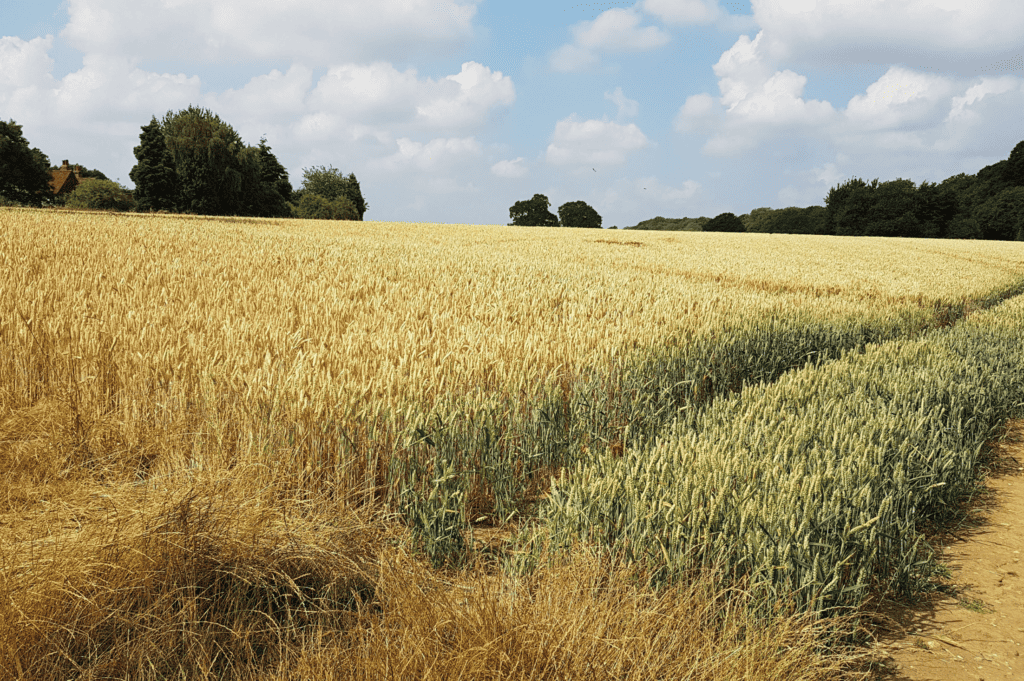Always an emotive topic and one that our main political parties are using to fight the housing crisis and win over the electorate, our Heritage Consultant Ruth Gray looks at the history, purpose and future of the Green Belt.
The Green Belt is an emotive topic and one that our main political parties are using to fight the housing crisis and win over the electorate. Back in 2020 The Heritage Alliance stated:
‘Government data shows that there has been a 62% increase in the loss of greenfield Green Belt land since 2013, with 315 hectares lost in 2016/17 alone. The National Government should develop clear guidance for local authorities on housing requirements to protect designated land, support the creation of new Green Belts where local authorities have established a clear need for them and ensure departments work together to direct economic and housing growth towards areas with capacity for redevelopment on brownfield sites. This will protect a significant proportion of our nature reserves and our valuable natural heritage.’ 1
The nineteenth-century precedents for the greenbelt, (also at the time called ‘the agricultural belt’) include the 1837 plan for Adelaide attributed to William Light, and James Silk Buckingham’s scheme for a model town. The agricultural belt was promoted by the early Garden City movement. The agricultural belt was intended to give a precise edge to the town, provide fresh air, act as a buffer from surrounding communities, and be used for the production of food. Economically, it was a way of limiting the growth of the town, of controlling land speculation on the edges of the town, and of stabilizing the value of land in the surrounding agricultural area. 2

From the concept of the agricultural belt arose a whole host of new green models that have that informed twentieth-century urban design: greenbelts, green wedges, greenwebs, green corridors, and greenways. But it is the greenbelt that receives the most attention and is integral to many political debates. The Metropolitan Green Belt around London was first proposed by the Greater London Regional Planning Committee in 1935. The Town and Country Planning Act 1947 then allowed local authorities to include green belt proposals in their development plans. In 1955, Minister of Housing Duncan Sandys encouraged local authorities around the country to consider protecting land around their towns and cities by the formal designation of clearly defined green belts. The Green Belt we know today has remained largely unreviewed throughout the post-war era. 3

Today the Green Belt has become a bit of a political football between the two main parties and a recent government survey found that there is considerable misunderstanding about the purpose and function of green belt, including that people often conflated Green Belt and green fields, and overlook its original purpose having been to keep urban areas apart. 4 Recent proposals to change the planning system within the ‘Levelling Up and Regeneration Bill’, have some commentators arguing that the need for housing will only be met if development takes place on the Green Belt. As things stand, local councils decide their own housing requirements while considering local needs and whether building on the green belt is necessary. The Governments Research Briefing released on 7 February 2023 states:
‘The Government has proposed amending the NPPF to make clear that local planning authorities “are not required to review and alter Green Belt boundaries if this would be the only way of meeting [housing] need in full”. It has also suggested that National Development Management Policies, which the Bill would introduce, might include protections for Green Belt land.’ 5
Sir Keir Starmer has said Labour would give English councils more powers to build on green belt land to boost housing. However, he said construction would only take place where it does not “affect the beauty of our countryside”.6 Housing targets will come back under Labour but expect to be relaxed under the Conservatives. The current Conservative government are under pressure from their backbenchers to protect Green Belt from further development whilst Labour plan to increase powers to build. More power to local authorities and residents over development are being promised by both main parties. Either way the green belt is set to be the focus of much debate in the run up to the general election.
It is no doubt a complex process to consider development within the Green Belt however, Planning & Design are experts in assisting property and landowners with planning enquiries so please do get in touch on 01332 347371.
Ruth Gray, Heritage Consultant, Planning & Design Practice Ltd



